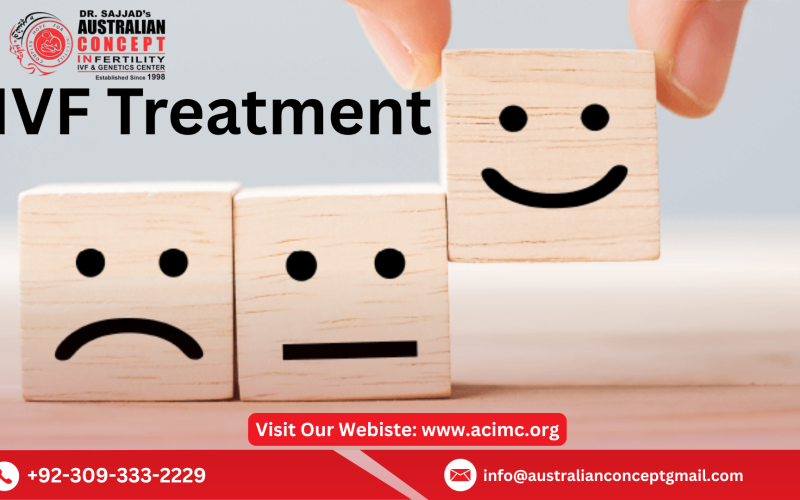Introduction
In recent years, In Vitro Fertilization (IVF) has become one of the most sought-after treatments for couples struggling with infertility. It offers hope to those who cannot conceive naturally, but one of the biggest concerns for patients is the cost of IVF. In Pakistan, the price of IVF treatment can vary significantly, and understanding the factors that influence the overall cost helps couples plan better.
What Factors Affect the IVF Treatment Cost in Pakistan
1. The Reputation and Location of the Clinic
One of the most significant factors that affect the cost is the clinic itself. Well-established fertility centers with experienced specialists and advanced technology often charge higher fees compared to smaller or less-known clinics.
- Location matters: IVF centers in major cities like Lahore, Karachi, and Islamabad generally have higher charges due to operational costs, advanced facilities, and greater demand. Smaller cities may offer comparatively lower rates.
- Reputation adds value: Couples often prefer clinics with high success rates and qualified specialists, which naturally increases the cost but also improves the chances of success.
2. Experience of the Fertility Specialist
The expertise of the doctor performing the treatment plays a critical role in both cost and outcomes. Highly qualified fertility specialists with years of experience tend to charge more for consultations and procedures. However, investing in experienced hands often reduces the risk of failed attempts, ultimately saving costs in the long run.
3. Diagnostic Tests and Pre-Treatment Evaluations
Before starting IVF, couples must undergo several tests to determine the cause of infertility and assess whether IVF is the right treatment. These tests may include:
- Semen analysis
- Hormonal tests
- Ultrasound scans
- Blood tests for infections or genetic concerns
These evaluations add to the total treatment expense, and their cost may vary depending on the complexity of the case and the facilities available at the clinic.
4. Medication Costs
One of the most expensive components of IVF is the medication required for ovarian stimulation. These fertility drugs are prescribed to encourage the ovaries to produce multiple eggs.
- Imported vs. local medicines: Imported hormonal injections are generally more costly than locally manufactured alternatives.
- Dosage differences: The dosage and duration of medication vary from patient to patient based on age, ovarian reserve, and medical history. Women with a low egg reserve may require higher doses, increasing the cost significantly.
5. Number of IVF Cycles Required
Success in IVF is not always achieved in the first attempt. Some couples may need two or more cycles before a successful pregnancy is established. Naturally, the more cycles performed, the higher the total cost.
Couples should keep in mind that while the initial cost per cycle is quoted, additional cycles can double or triple the overall expense.
6. Use of Advanced Procedures
Sometimes, standard IVF may not be sufficient, and advanced techniques are required, which increase the total cost. These may include:
- ICSI (Intracytoplasmic Sperm Injection): Used in cases of severe male infertility, this technique involves injecting a single sperm directly into the egg.
- PGD/PGS (Preimplantation Genetic Diagnosis/Screening): Recommended when there is a risk of genetic disorders. This adds significantly to the cost.
- Embryo freezing: Couples who wish to preserve extra embryos for future use incur additional charges for freezing and storage.
Each add-on increases the overall treatment budget but may improve success rates or address specific medical needs.
7. Laboratory and Technology Standards
The success of IVF largely depends on the quality of the laboratory where fertilization and embryo development take place. State-of-the-art labs equipped with advanced incubators, microscopes, and monitoring systems ensure higher success rates but also demand higher costs.
Clinics investing in international-grade infrastructure and technology may charge more, but they also provide better safety and reliability.
8. Lifestyle and Health Conditions of the Couple
The health of both partners can indirectly affect the IVF cost. For example:
- Women with underlying health conditions like PCOS or endometriosis may require additional medication or monitoring.
- Male infertility issues may necessitate procedures like surgical sperm retrieval.
- Lifestyle factors such as obesity or smoking may also complicate treatment and require extra medical support.
These added interventions increase the total expense of IVF treatment.
9. Additional Services and Counseling
Some fertility clinics offer comprehensive packages that include psychological counseling, nutritional guidance, and continuous monitoring. While these services add to the cost, they provide emotional and physical support, which is invaluable for couples going through the stressful journey of IVF.
10. Success Rate of the Clinic
Although it may not be a direct “cost” factor, the success rate of a clinic is important to consider. A clinic with higher success rates might charge more, but the likelihood of conceiving in fewer cycles may actually reduce overall expenses compared to choosing a cheaper clinic with lower success rates.
Conclusion
The IVF treatment cost in Pakistan is influenced by multiple factors, including the reputation of the clinic, the specialist’s expertise, pre-treatment tests, medications, the number of cycles required, and advanced procedures like ICSI or embryo freezing. Couples must also consider lifestyle factors, lab standards, and the clinic’s success rate when evaluating overall expenses.
While the price of IVF may seem overwhelming, it is important to view it as an investment in achieving the dream of parenthood. Choosing the right clinic with experienced professionals and advanced technology can increase success rates and provide peace of mind throughout the process.












